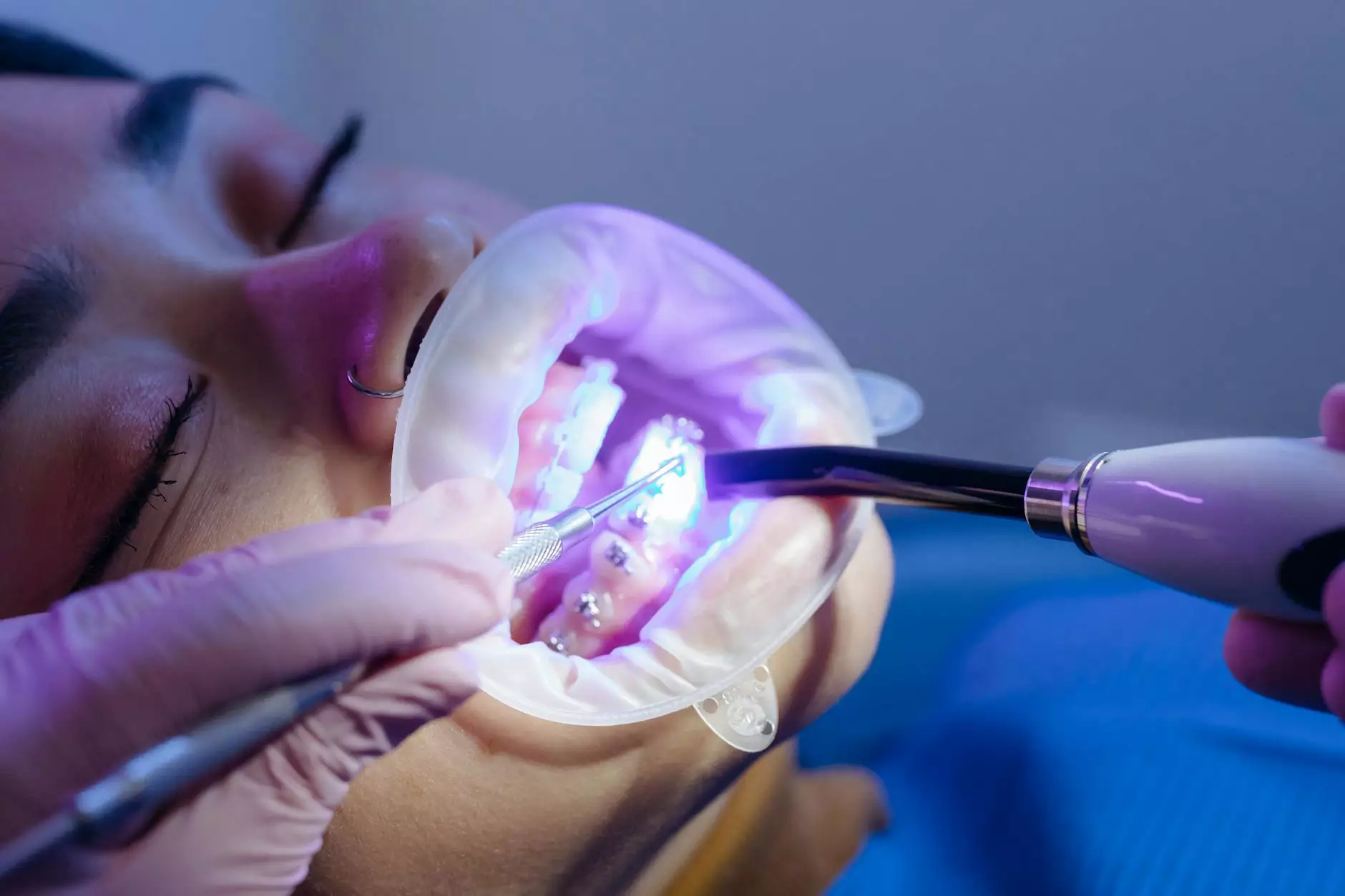Comprehensive Guide to Shoulder Abduction Pain: Causes, Treatments, and Preventative Strategies

Shoulder abduction pain is a common complaint among individuals of all ages, impacting daily activities, athletic performance, and overall quality of life. Understanding the intricacies of this condition, its underlying causes, and the most effective treatment options is essential for those seeking relief and long-term solutions. In this extensive guide, we delve deep into the nuances of shoulder abduction pain, providing comprehensive insights tailored to patients, healthcare providers, chiropractors, and educators involved in health and medical fields.
Understanding Shoulder Abduction and Its Role in Human Mobility
Shoulder abduction refers to the movement of the arm away from the body's midline in the coronal plane. This movement is vital for numerous daily activities such as lifting objects overhead, reaching for items, and engaging in sports. The shoulder joint's remarkable range of motion is enabled primarily by complex interactions among bones, muscles, tendons, ligaments, and nerves.
The key muscles involved in shoulder abduction include the deltoid muscle, especially its deltoid fibers, as well as the supraspinatus, part of the rotator cuff muscles. Proper functioning of these structures ensures smooth, pain-free abduction, whereas dysfunction or injury can lead to pain, restricted movement, or instability.
Causes of Shoulder Abduction Pain: An In-Depth Analysis
Shoulder abduction pain can arise due to a multitude of causes, ranging from acute injuries to chronic conditions. Identifying the root cause is crucial for effective treatment.
1. Rotator Cuff Tendinopathy and Tears
One of the most common sources of shoulder abduction pain is damage to the rotator cuff tendons. Tendinopathy refers to inflammation or degeneration of these tendons, often caused by repetitive overhead movements or age-related wear and tear. Complete tears can significantly impair shoulder function, causing local pain during abduction and difficulty lifting the arm.
2. Impingement Syndrome
This condition occurs when the tendons or bursa in the shoulder become compressed during arm elevation, leading to pain and inflammation. Impingement is frequently linked to repetitive activities or anatomical variations that reduce the subacromial space.
3. Shoulder Instability
Instability or dislocation of the shoulder joint, often caused by traumatic injury or congenital laxity, can cause pain during abduction. Recurrent instability may lead to subluxations or dislocations, damaging soft tissues and nerves.
4. Bursitis and Capsulitis
Inflammation of the subacromial bursa (bursitis) or the joint capsule (adhesive capsulitis) can restrict movement and provoke pain during shoulder abduction. These conditions often coexist with other structural issues.
5. Osteoarthritis and Degenerative Changes
Degenerative joint disease results from cartilage breakdown, leading to joint stiffness, pain, and decreased mobility. Osteoarthritis affects the shoulder's synovial joint, especially in older adults.
6. Pinched Nerves and Neurological Causes
Nerve impingement or compression, such as from cervical spine osteoarthritis or disc herniation, can result in radiating shoulder pain during abduction. Such neurological factors necessitate precise diagnosis and targeted interventions.
Recognizing Symptoms and When to Seek Professional Help
Symptoms associated with shoulder abduction pain vary depending on the underlying cause but often include:
- Pain localized on the outer shoulder or upper arm during arm lifting
- Weakness or a feeling of instability
- Limited range of motion, especially inability to raise arm overhead
- Swelling, tenderness, or warmth in the shoulder region
- Radiating pain into the neck or down the arm in neurological cases
If you experience persistent or severe symptoms, especially following trauma, or if pain interferes with daily activities, consulting a qualified health & medical professional or chiropractor is vital for accurate diagnosis and effective treatment planning.
Innovative Treatment Strategies for Shoulder Abduction Pain
Effective management of shoulder abduction pain involves a multifaceted approach tailored to the specific diagnosis. These strategies encompass medical interventions, physical therapy, chiropractic care, and lifestyle modifications.
1. Medical Interventions and Diagnostics
Initial assessment typically involves clinical examination and imaging such as MRI, ultrasound, or X-rays to evaluate soft tissue integrity and joint structures. Based on findings, treatments may include:
- NSAIDs and corticosteroid injections for inflammation reduction
- Minimally invasive procedures like prolotherapy or platelet-rich plasma (PRP) injections
- Surgical interventions such as rotator cuff repair, subacromial decompression, or shoulder stabilization procedures when conservative treatment fails
2. Physical Therapy and Rehabilitation
Rehab programs focus on restoring mobility, strengthening shoulder muscles, and improving biomechanics. Key techniques include:
- Stretching exercises to enhance flexibility
- Strengthening routines targeting rotator cuff and scapular stabilizers
- Functional training tailored to individual activity demands
- Manual therapy techniques to reduce muscle tension and improve joint mobility
Guidance from licensed physical therapists ensures safe progression and effective outcomes.
3. Chiropractic Care and Alternative Therapies
Chiropractors specializing in musculoskeletal disorders employ spinal adjustments, mobilization, and soft tissue techniques to alleviate nerve impingements, improve joint function, and reduce inflammation. Complementary modalities include:
- Therapeutic massage
- Electrotherapy
- Dry needling
- Postural correction strategies to prevent recurrence
Integrating chiropractic care with conventional treatments offers a holistic approach for persistent or chronic shoulder pain.
Preventative Strategies and Lifestyle Modifications for Shoulder Health
Prevention is paramount in avoiding recurrent pain and injury. Practical measures include:
- Maintaining proper posture during daily activities and work
- Engaging in regular stretching and strengthening exercises, especially for overhead sports or repetitive tasks
- Using ergonomic tools and proper techniques in sports and occupational settings
- Gradually increasing activity intensity to prevent overuse injuries
- Avoiding sudden or forceful shoulder movements
The Role of Education and Professional Guidance in Shoulder Pain Management
Educators and healthcare providers play a crucial role in promoting awareness about shoulder health. They can:
- Develop educational programs that teach proper biomechanics and injury prevention techniques
- Provide informative resources on recognizing early symptoms
- Encourage early consultation to prevent chronic issues
- Incorporate shoulder health modules into physical education and occupational training curricula
By fostering an informed community, the incidence of persistent and recurrent shoulder abduction pain can be significantly reduced.
Innovative Technologies and Future Directions in Shoulder Pain Treatment
Advancements in medical technology and rehabilitative science continue to revolutionize how shoulder abduction pain is diagnosed and treated:
- Use of 3D imaging and motion analysis for precise diagnosis
- Development of regenerative medicine techniques such as stem cell therapy
- Integration of wearable devices for ongoing monitoring and rehab adherence
- Application of virtual reality for immersive physiotherapy experiences
Continued research and innovation promise more effective, minimally invasive solutions with faster recovery times for patients suffering from shoulder mobility issues.
Conclusion: Achieving Optimal Shoulder Function and Health
Understanding the complex dynamics of shoulder abduction pain empowers individuals and healthcare professionals alike to implement targeted interventions that restore full mobility and reduce discomfort. Whether through medical treatment, chiropractic care, physical therapy, or educational initiatives, a multidisciplinary approach ensures comprehensive care and optimal outcomes.
Prioritizing early diagnosis, adopting preventative habits, and staying informed about the latest advancements in treatment techniques can dramatically improve quality of life and shoulder health for all.









